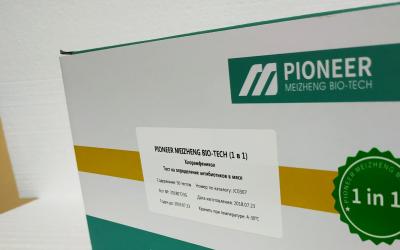Danish Crown: Increased pig supplies and new initiatives

Forecasts and Future Plans
Danish Crown expects to slaughter approximately 9.4 million pigs in the 2025/26 financial year. This corresponds to near-full capacity utilization. Group CEO Nils Ulrich Duedahl noted that such slaughter volumes require careful management of supplier agreements. Therefore, new regulations regarding pig supply volumes are being introduced.
New Supplier Regulations
One of the key changes is the introduction of the so-called "stability mask." Suppliers will now be unable to increase their supply volumes, known as A-quantities, without prior approval from Owner Service. A 12-month notice period is also required for changes to supply volumes, allowing the company to more effectively manage its resources and plan slaughter.
Support for Young Farmers
Effective September 1, 2025, Danish Crown will discontinue agreements for growth bonuses and heavy pig supplies. However, margin guarantees and barn subsidies will remain available to new and young suppliers. This decision is aimed at supporting young farmers and start-ups, which is particularly important given the anticipated generational shift in the industry. Owner Service DIRECTOR Søren Thinggaard emphasized that the company maintains support tools for beginning farmers, enabling them to successfully enter the market.
Close Collaboration with Suppliers
: Danish Crown views these new measures as a step toward closer collaboration with suppliers. This will allow for optimal capacity utilization and ensure competitive conditions for all market participants. Nils Ulrich Duedahl noted that, given the high interest in collaboration, it is important to maintain an open dialogue with suppliers to find the most effective solutions.
Danish Crown is thus demonstrating a proactive approach to business development, adapting to changing market conditions. Increasing pig supply volumes, new initiatives to support young farmers, and the introduction of strict supplier regulations are all aimed at strengthening the company's position in the industry and creating a sustainable supply chain. This could ultimately lead to improved product quality and increased competitiveness in the market.
Read together with it:
- UniCredit заявил о галактических усилиях из-за санкций против РоссииUniCredit старается не нарушить «более 15 тыс. санкций», а также не «совершать ошибки», которые позволят изъять его активы в России, заявил гендиректор. После начала военной операции банк начал рассматривать возможность ухода Итальянский банк UniCredit прилагает «галактические усилия», пытаясь соблюсти международные санкции в отношении своего российского подразделения. Об этом заявил генеральный д...
- "Коллективы АПК способны решать любые задачи даже в непростых условиях". Назаров о заслугах сельхозпроизводителейЮрий Назаров 13 ноября, Минск. Обеспечение продовольственной безопасности страны - большое достижение трудовых коллективов аграриев, отметил управляющий делами Президента Республики Беларусь Юрий Назаров на торжественной церемонии награждения государственными и иными наградами работников АПК Управления делами Президента Республики Беларусь, передает корреспондент БЕЛТА. Торжественная церемония наг...
- Колумбия: При экспорте скота сертификация и прослеживаемость больше не являются необязательнымиВысококачественное животноводство, особенно при экспорте, требует сертификации и прослеживаемости. Это необходимые условия для выхода и конкуренции на многих международных рынках, а также на некоторых всё более требовательных внутренних рынках. Колумбийское животноводство не является исключением из этих правил, и, хотя предстоит ещё многое сделать, всё большее число ферм и компаний внедряют эти ме...
- Лучшие не только по молоку. Какие рекорды поставили в экспериментальной базе имени КотовскогоНовости темы Экспериментальная база имени Котовского известна далеко за пределами Узденщины благодаря высоким показателям, которых из года в год добиваются в хозяйстве. Лучшие результаты в районе агропредприятие показывает как по молоку и зерновым, так и по сахарной свекле. Страда этого года, проходившая не в самых простых погодных условиях, также стала рекордной. Хлеб – всему голова Весна 2.........
- Pharmaceutical companies see a threat to EU security due to bacteria in UkraineAntibiotic-resistant superbugs have been detected in Ukrainian soldiers since the beginning of the conflict, and now they pose a threat to Europe, according to a foundation developing antibiotics.The Ukrainian conflict threatens Europe with antibiotic-resistant "superbugs," said Henry Skinner, CEO of the AMR Action Fund, which specializes in investing in antimicrobials. His article was published o...


























































